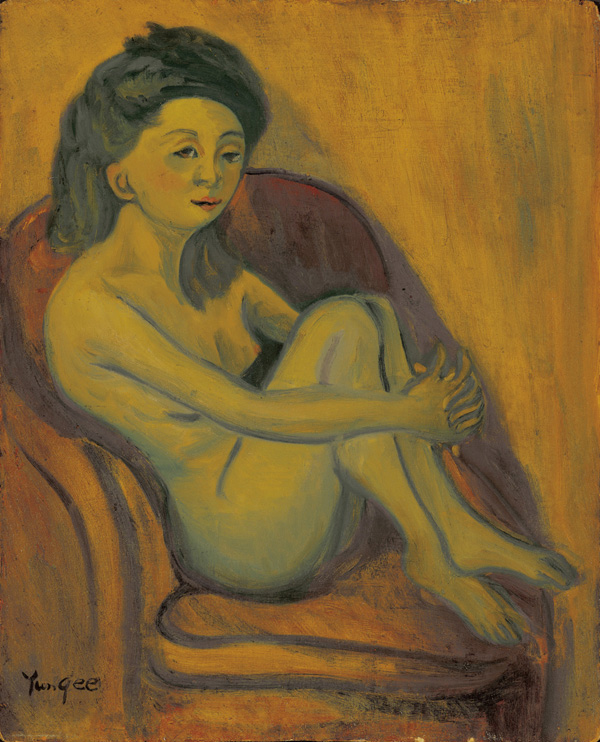|
Nude in the Chair
|
|
1930 Oil on board 45.5 x 37 cm Signed lower left Yun gee in English |
|
Estimate
1,200,000 - 1,500,000 36,400 - 45,500
|
|
|
Around the late 1930s or the early 1940s, Yun Gee created a series of paintings of nude women, using only a single red chair as a prop. In the book "Overseas Chinese Artist - Yun Gee", Nancy Chou writes that Yun Gee's first showing of his nudity series created quite a controversy; critics felt that the painting had lost its structure and the viewer could only feel its soul. The wife of a British minister commented that although she was at first deeply attracted to the rich colors of the painting, she slowly progressed towards discovering the meaning of life, became immersed in searching for the deep subconscious and eventually forgot about the colors1! Regardless, Yun Gee's portraits are always vaguely indistinct, exuding the mood and sentiments of a lonely soul and reflecting the artist's own hard life. Yun Gee once categorized his artistic life in 3 phases: Sentimental period - 1925 to 32; Power period - 1932 to 39 and Life period - post 1939, highlighting the specific characteristics of each phase. In her essay "In Search of Yun", Jane C. Ju documented Li-lan's opinion of her father's work. Li-lan felt that although his later works were much better, Yun Gee's style was very different from that of his earlier work in which he had used a wider range of brushstrokes2. Indeed, Yun Gee created many paintings in his twilight years in which he adopted a much bolder style than seen in his earlier works.
The "Nude in the Chair" series, created by Yun Gee in his later years, was done with an orange-green color theme - the background consists of a wide range of vivid orange shades, with the nude woman outlined in bright green and moderated with a subtle coffee red. The painter used dark green to give form and structure to the nude body, using an even darker green to highlight the shadows and curves of the body. The entire painting is brilliantly created using simple lines and color, with its sentimental mood further enhanced by the sparing use of red to highlight the facial lines, ears, lips and breasts of the subject.
1 Nancy Chou, Overseas Chinese Artist Yun Gee, Fang-chih Publishing House, Taipei, 1999, p. 280
2 Jane C. Ju, In Search of Yun Gee, The Chinese, American, and Modernist Painter, 'The Art of Yun Gee' Taipei Art Museum
